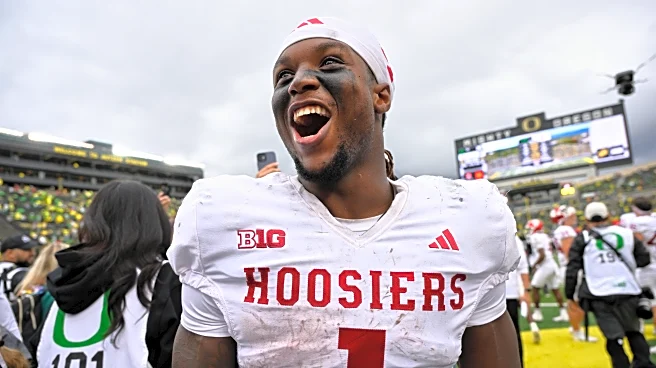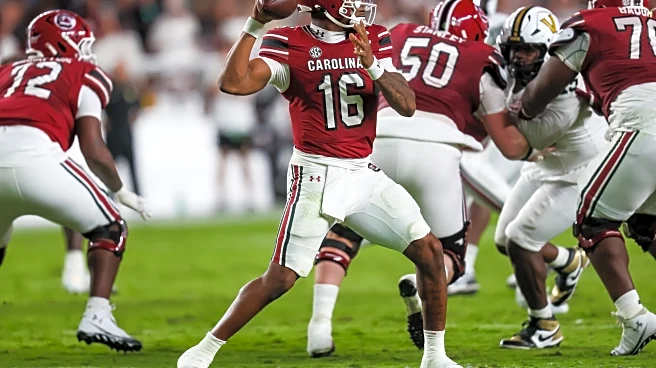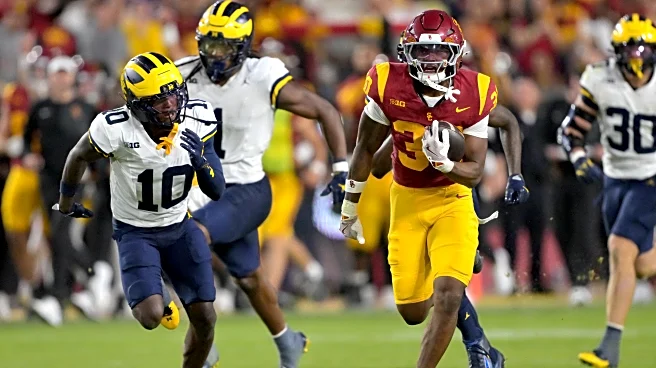What's Happening?
Clayton McCullough, known as King Miller, a walk-on running back for USC, played a pivotal role in the Trojans' 31-13 victory over Michigan. Despite not being on scholarship, Miller showcased his potential with a standout performance, including a 49-yard run and a 47-yard run, and became the first walk-on to score a touchdown for USC since 1994. The game marked USC's first victory over Michigan since the Rose Bowl in January 2007. Miller seized his opportunity with the first three tailbacks on the Trojans' depth chart sidelined by injury, contributing significantly to the team's success.
Why It's Important?
Miller's performance highlights the depth and resilience of USC's football program, showcasing the potential of non-scholarship players to make significant contributions. This victory is crucial for USC as it boosts their standing in the Big Ten Conference and enhances their chances of returning to the AP Top 25 rankings. For Michigan, the loss ends their three-game winning streak and underscores the challenges they face in maintaining their championship form amidst injuries and inexperience. The game also reflects the competitive nature of college football, where unexpected players can emerge as key contributors.
What's Next?
USC will face Notre Dame next Saturday, presenting another opportunity to solidify their position in the conference and potentially improve their national ranking. Michigan will host Washington, where they will aim to recover from this loss and address the issues highlighted during the game. Both teams will need to strategize and adapt to their upcoming opponents, focusing on overcoming injuries and optimizing their gameplay.
Beyond the Headlines
Miller's success as a walk-on player raises questions about the traditional scholarship system in college sports and the potential for non-scholarship athletes to impact team dynamics. It also highlights the importance of depth in a team's roster, where injuries can lead to unexpected opportunities for lesser-known players. This development may influence recruitment strategies and the evaluation of player potential beyond conventional metrics.












